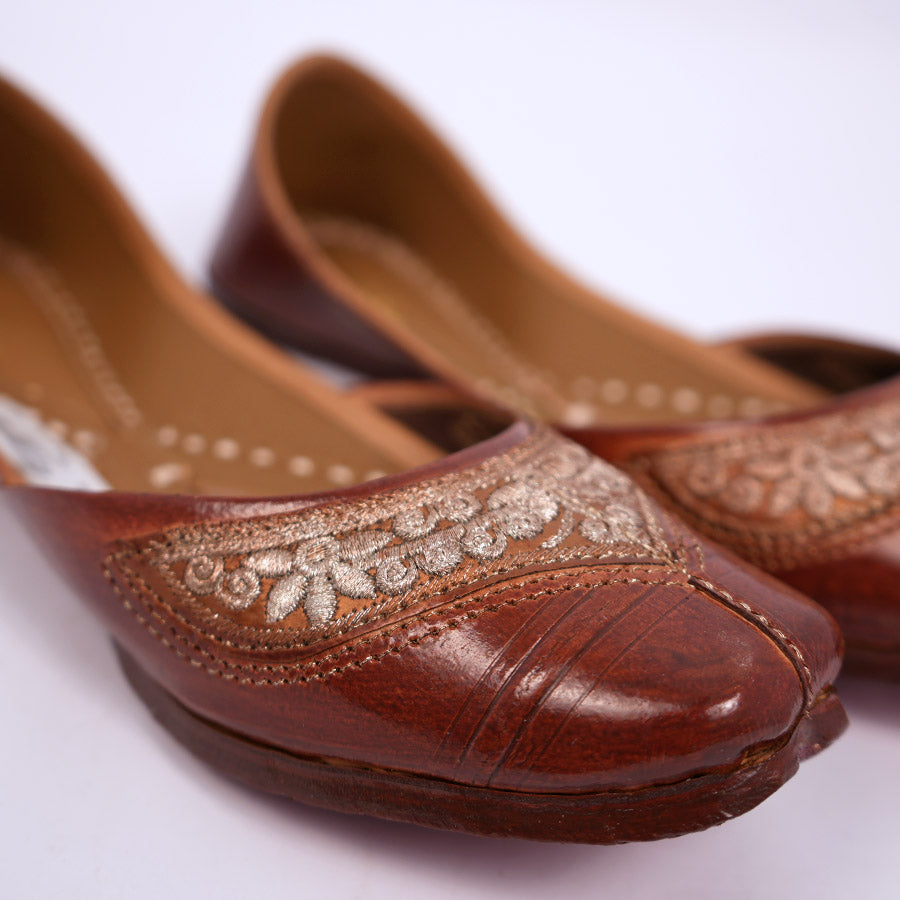
Paduka: Ancient Indian Footwear with Deep Cultural Roots
Anand MishraShare
Paduka is one of the most ancient forms of footwear from the Indian subcontinent. Simple in design, it features a flat wooden sole and a single knob that fits between the big toe and second toe to secure the foot. Unlike modern sandals, it lacks straps or enclosures, resembling a primitive version of today’s flip-flops.
Distinctive Features of Paduka
- Materials: Traditionally crafted from wood, though luxury versions made of ivory, silver, or other metals were reserved for royalty or spiritual leaders.
- Design: Flat platform with a single toe peg; no side straps or back support.
- Spiritual and Cultural Meaning: Widely linked with sages, monks, and renunciates who embraced minimalism. In Hindu mythology, Lord Rama’s padukas were symbolically placed on the throne by his brother Bharata during Rama’s exile—representing Rama’s moral rule in absentia.
- Object of Veneration: In many Hindu traditions, padukas are revered in rituals, temples, and spiritual ceremonies as representations of a deity’s or guru’s presence.
The Legacy of Paduka: More Than Just Footwear
With a history spanning over two millennia, the paduka is not only India’s earliest known shoe but also a powerful emblem in religion, philosophy, and tradition. Its presence is deeply interwoven into India's spiritual practices and royal heritage.
Historical Roots
- Earliest Traces: Sculptures and temple carvings dating back to the 3rd century BCE—such as those from Ajanta and Taxila—depict individuals using padukas.
- Simple Yet Thoughtful: The design is intentionally basic, encouraging wearers to walk mindfully. Most early padukas were wooden, with no heel or strap support.
Traditional Craftsmanship Behind Padukas
Despite its simplicity, making a pair of padukas demands skill, precision, and an understanding of both utility and symbolism.
Common Materials
- Wood: Primarily from trees like teak, rosewood, or sandalwood (especially for ceremonial use).
- Other Materials: Rare versions were made using ivory, silver, or brass—mainly for spiritual or royal purposes.
- Ornamentation: Inlays of stone or metal were sometimes added for aesthetic or spiritual enhancement.
Crafting Process
-
Selecting the Wood
Dense, seasoned wood is chosen to ensure strength and comfort. -
Shaping the Base
The sole is carved and smoothed to match a typical foot’s dimensions. -
Toe Peg Placement
A central knob is shaped and positioned between the big toe and the second toe, often carved from the same wood piece for durability and symmetry. -
Decorative Work (Optional)
Some padukas, especially those for temples or royalty, feature engraved symbols like lotuses or swastikas, and are sometimes adorned with inlaid metals or gems. -
Finishing Touches
Natural oils or waxes are applied for polish and preservation. Final checks ensure they are comfortable and balanced.
Regional Styles
- South India: Typically uses sandalwood with minimal decoration—primarily for religious purposes.
- North India: Often more ornate, using rosewood or teak.
- Tribal Regions: Sometimes made from carved bone or rough wood, used in local rituals.
Modern Interpretations
Today, padukas are no longer worn as daily footwear but remain relevant in spiritual and cultural contexts. Artisans still produce them as religious offerings, spiritual gifts, or heritage keepsakes, preserving the tradition and symbolic value.
